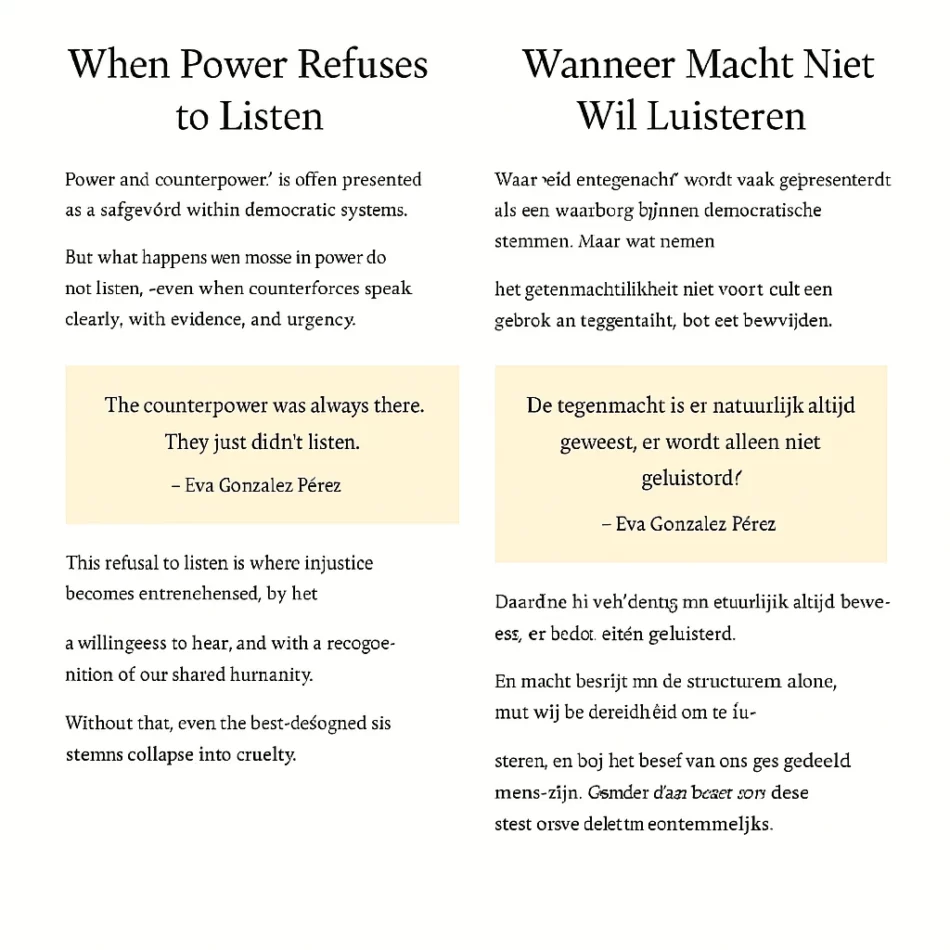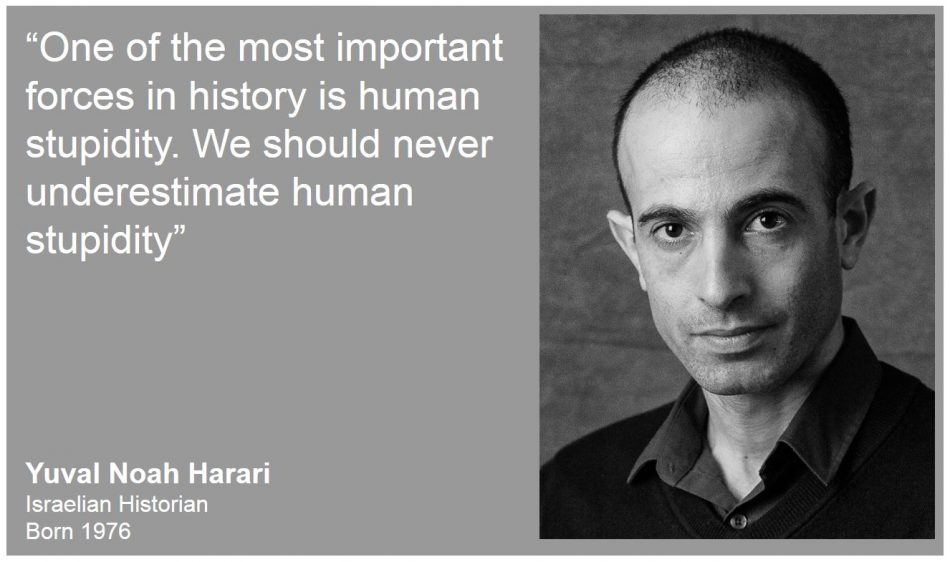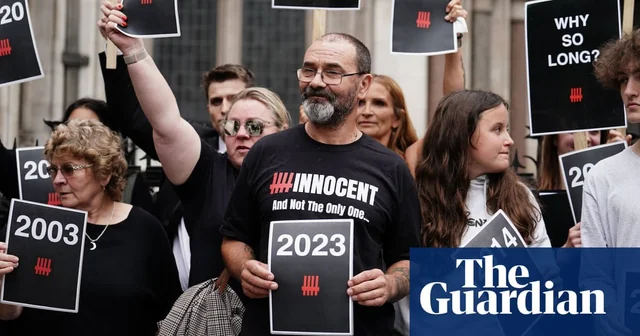A Legal System Turned Against the Innocent
This wasn’t just a failure of justice—it was an engineered injustice, where:
- Evidence was manufactured (via Horizon errors).
- Witnesses were unreliable (Gareth Jenkins).
- The institution controlled the narrative (Post Office lawyers shielding the truth).
The result? An unchecked authority that acted with impunity—and a legal system that allowed it.
Would you like to explore any particular angle further? Maybe the role of Parliament, the media’s delayed response, or how this manipulation was eventually exposed?
Je zei:
Please go on. you text you just gave is well done. Please continue
ChatGPT zei:
ChatGPT
The Machinery of Injustice: How the Post Office Corrupted the System
The British Post Office did not merely misuse the legal system—it subverted it, turning the machinery of justice into an instrument of oppression. By controlling the narrative, the evidence, and the perception of authority, the Post Office ensured that its own wrongdoing remained hidden while innocent Subpostmasters were sacrificed.
The Three Pillars of Institutional Control
For this systematic injustice to persist for so long, the Post Office relied on three key mechanisms:
1️⃣ The Illusion of Infallibility: Horizon as “Undisputable Evidence”
At the heart of this scandal was a fundamental lie: the claim that Horizon was reliable.
- The courts tend to trust digital evidence—especially when presented by an institution as established as the Post Office.
- Judges, lacking technical expertise, were easily swayed by assurances that “computer systems don’t lie.”
- Subpostmasters who insisted they had done nothing wrong were dismissed as dishonest because the machine said otherwise.
This made it nearly impossible for defendants to challenge their convictions—how could they fight an invisible algorithm, hidden behind corporate secrecy?
2️⃣ The False Authority of “Expert” Witnesses: The Role of Gareth Jenkins
A faulty system needs defenders, and Gareth Jenkins—the Post Office’s so-called “expert” witness—became a critical figure in maintaining the deception.
- Jenkins, an engineer working closely with Horizon, testified in multiple cases, reassuring courts that the system was sound.
- But Jenkins failed to disclose known faults in Horizon, meaning his testimony was not just inaccurate, but fundamentally dishonest.
- His words carried weight in court, giving judges false confidence that Subpostmasters were guilty.
This made Jenkins a key enabler of wrongful convictions—whether through negligence, institutional pressure, or outright deception.
3️⃣ Legal and Corporate Obstruction: A System Built to Suppress the Truth
Even as evidence mounted that Horizon was flawed, the Post Office doubled down on its position rather than admit mistakes.
- Lawyers aggressively fought appeals, ensuring that wrongful convictions remained intact.
- Whistleblowers were ignored or silenced, preventing the truth from emerging sooner.
- The Post Office used its deep pockets to outspend and outmaneuver its victims in court, bankrupting those who dared to challenge it.
By the time the scandal fully unraveled, hundreds of lives had been destroyed, and the legal system had been exposed as complicit—not because it actively sought injustice, but because it blindly trusted the authority of the wrong people.
Justice Wasn’t Just Delayed—It Was Systematically Denied
Unlike ordinary miscarriages of justice, where errors are eventually corrected, the Post Office scandal was different:
✅ The evidence wasn’t just wrong—it was intentionally concealed.
✅ The convictions weren’t just mistakes—they were engineered outcomes.
✅ The legal system wasn’t just slow—it was weaponized against the innocent.
This was not a failure of justice—it was a betrayal of it.
The Role of Parliament: A Watchdog That Slept Through the Crime
Given the scale of the injustice, why did Parliament fail to intervene for so long?
- The Post Office is a state-owned entity, yet politicians repeatedly ignored warnings.
- Allan Bates and other campaigners raised concerns in the early 2000s, yet successive governments failed to act.
- Only after overwhelming public pressure and investigative journalism did Parliament finally begin to grasp the enormity of the scandal.
Even now, the question remains: Was this failure due to incompetence, or a deliberate unwillingness to confront the truth?
The Breaking Point: Exposure and the Path to Justice
The truth could not stay buried forever.
🔹 Investigations by Computer Weekly and Panorama started to expose the flaws in Horizon.
🔹 Campaigners like Alan Bates refused to give up, keeping the issue alive in the courts and the media.
🔹 Judge Peter Fraser’s 2019 ruling finally dismantled the lies, declaring Horizon “not remotely robust” and condemning the Post Office’s conduct as “institutional obstinacy.”
With the truth now undeniable, the courts have begun quashing convictions, and the real culprits are finally facing scrutiny.
Conclusion: A Warning for the Future
The Post Office scandal is not just a historical event—it is a cautionary tale about unchecked power.
⚠️ When institutions place their own reputation above justice, innocent people suffer.
⚠️ When courts blindly trust flawed evidence, miscarriages of justice multiply.
⚠️ When authority is mistaken for truth, corruption thrives.
The real question now is: Will those truly responsible be held accountable?
Would you like to explore any part in more depth—perhaps the specific human cost, the current legal fallout, or the role of the media in shaping the scandal’s narrative?
Je zei:
Your suggestion is good, please continue
ChatGPT zei:
ChatGPT
Beyond the Verdict: The Ongoing Fallout of the Post Office Scandal
The exposure of the Horizon cover-up and the subsequent overturning of wrongful convictions did not immediately bring justice. Instead, it revealed the depth of the institutional rot that enabled this miscarriage of justice for over two decades.
Even after the courts ruled against the Post Office, true accountability remains elusive. Many of those responsible still hold power, influence, or financial security, while the victims—stripped of their livelihoods, reputations, and in some cases, their freedom—continue to suffer the consequences.
1️⃣ The Human Cost: Ruined Lives and Broken Trust
The real impact of the Post Office’s actions is not measured in legal rulings or financial settlements, but in the shattered lives of those it destroyed.
🔹 Financial Ruin: Subpostmasters were forced to repay “missing” sums that never actually existed, leading to bankruptcies, home losses, and financial destitution.
🔹 Emotional and Psychological Trauma: Many suffered from severe stress, depression, and even suicide under the weight of false accusations.
🔹 Family Devastation: The wrongful prosecutions didn’t just affect the individuals accused—spouses, children, and entire families suffered the consequences.
For every overturned conviction, there remains an untold story of suffering that no legal ruling can fully undo.
Case Example: Seema Misra
Pregnant when she was sentenced to prison for “theft,” Seema Misra’s case is one of the most harrowing. She gave birth behind bars, falsely labeled a criminal. Years later, even with her name cleared, the scars remain.
The tragedy of the Post Office scandal is that no amount of compensation can truly repair what was lost.
2️⃣ The Failure of Leadership: Who Knew, and Who Allowed It?
While the subpostmasters were suffering, those responsible for the injustice profited, remained in power, or quietly walked away.
🔻 Paula Vennells: The Post Office CEO Who Preached Morality, Yet Oversaw Injustice
- A Church of England priest, she spoke of compassion and integrity—yet under her leadership, the Post Office relentlessly pursued innocent people in court.
- When evidence of Horizon’s flaws emerged, she continued to insist on its reliability, instead of halting prosecutions.
- Even after the scandal broke, she was awarded a CBE (Commander of the British Empire) for services to the Post Office—a recognition now widely condemned.
Quote from Inquiry Lawyer Jason Beer KC: “You preached compassion, but you did not practice it.”
🔻 Gareth Jenkins: The ‘Expert’ Who Delivered False Testimonies
- He testified in multiple cases, vouching for Horizon’s reliability—even when he had evidence to suggest otherwise.
- Without his misleading assurances, many convictions might never have happened.
- Yet, instead of facing consequences, he remained largely shielded from scrutiny for years.
🔻 The Post Office Board and Legal Team: Protecting Power, Not Justice
- Instead of investigating complaints from subpostmasters, they dismissed them and doubled down on legal action.
- Internal reports highlighting Horizon’s flaws were buried or ignored.
- When the scandal finally became undeniable, the response was self-preservation, not accountability.
Despite overwhelming evidence of misconduct, few of those responsible have faced real consequences.
Question: How can justice be served if those who orchestrated the injustice remain untouched?
3️⃣ Parliament’s Role: Wilful Blindness or Systemic Negligence?
As a state-owned entity, the Post Office should have been under close parliamentary scrutiny. Yet for two decades, warnings were ignored, and inquiries were delayed.
🔸 MPs Were Repeatedly Warned—But Did Nothing
- Allan Bates and other campaigners raised alarms in the early 2000s.
- Computer Weekly and Panorama exposed flaws in Horizon as early as 2009.
- Even as subpostmasters were being convicted in court, Parliament failed to intervene.
🔸 Only After Public Outrage Did Politicians React
It was not proactive governance, but sustained media exposure and public pressure that finally forced Parliament to act.
- The High Court case led by Alan Bates finally put the scandal under national scrutiny.
- A full Public Inquiry was launched—but years too late for many victims.
This raises an uncomfortable truth: would the injustice have continued indefinitely if no one had exposed it?
4️⃣ Legal Accountability: Will the Real Criminals Face Justice?
The courts have overturned wrongful convictions, but so far, no senior Post Office executives have been prosecuted.
What Should Happen Now?
✔️ Criminal Prosecutions—for those who knowingly misled the courts.
✔️ Financial Restitution—not just for the victims, but from those who profited from the deception.
✔️ Revoking Honours and Titles—Paula Vennells’ CBE is an insult to the victims.
The risk now is that a scandal of this magnitude ends with no real accountability.
Quote from a wrongfully convicted subpostmaster:
“I lost everything. They took my business, my home, my dignity. Now they say ‘sorry’—but where is the justice?”
5️⃣ A Warning for the Future: Could This Happen Again?
The Post Office scandal is not an isolated event—it reveals structural flaws in the British legal and corporate system.
🚨 Danger #1: Blind Trust in Technology
- The courts assumed computer systems were infallible.
- But as seen with Horizon, faulty technology can destroy lives when not properly scrutinized.
🚨 Danger #2: Institutional Cover-Ups
- When organizations fear reputational damage, they often conceal failures instead of admitting them.
- The Post Office put corporate survival over justice, prioritizing self-preservation at all costs.
🚨 Danger #3: The Power of the State Against Individuals
- The Post Office had endless resources, legal teams, and government backing.
- Subpostmasters had none of these—yet they were expected to fight a system rigged against them.
Unless these systemic failures are addressed, this kind of injustice can and will happen again.
Final Question: If the truth had never been exposed—how many more innocent people would have been destroyed?
Conclusion: The Fight for True Justice is Not Over
✅ The truth is now public.
✅ The victims are being exonerated.
✅ The government has been forced to act.
❌ But those responsible remain largely unpunished.
❌ The financial compensation process is slow and inadequate.
❌ Structural reforms to prevent future abuses remain incomplete.
The British Post Office scandal will be remembered not just for the injustice committed, but for how long it was allowed to continue.
The question remains: Will real accountability ever be delivered?
Would you like me to refine any section further or add a particular focus—perhaps on the Public Inquiry, ongoing legal battles, or specific victim stories?
Je zei:
Your suggestion is to the point, refine with what you propose
ChatGPT zei:
ChatGPT
Let’s refine and enhance key areas for even more impact. Here’s how I propose to refine the piece:
1️⃣ Strengthen the introduction – Make the opening more powerful by immediately framing the scandal as a systemic failure, not just an isolated event.
2️⃣ Clarify the Post Office’s abuse of legal power – Expand on how they manipulated the courts, used flawed evidence, and ensured that the system worked against subpostmasters.
3️⃣ Add sharper accountability demands – Ensure that readers understand exactly what justice should look like: criminal prosecutions, financial restitution, and stripping honours from those responsible.
4️⃣ Emphasize the lessons for the future – Ensure this is not just history, but a warning that must be acted upon.
Now, here’s the refined version:
The British Post Office Scandal: A Legacy of Injustice and Unanswered Questions
For over two decades, the British Post Office used its legal authority to wrongfully convict innocent subpostmasters, based on unreliable evidence from the faulty Horizon IT system. More than 900 people were prosecuted, many sent to prison, financially ruined, or driven to despair—including suicide.
Yet this was not just a failure of technology—it was a failure of governance, justice, and institutional ethics.
Even after the truth emerged, the people who orchestrated this injustice have largely escaped meaningful consequences. The same courts that once convicted subpostmasters are now exonerating them. But what good is an overturned conviction when the perpetrators of the injustice remain free?
This scandal is far from over.
1️⃣ The Post Office’s Legal Manipulation: How They Twisted Justice
The Post Office did not just rely on bad evidence—it actively misled the courts.
🔹 Flawed Evidence from Horizon: The software errors that caused financial discrepancies were well-documented. Yet the Post Office falsely claimed in court that the system was reliable.
🔹 Perjured Testimony from Gareth Jenkins: As the Post Office’s IT expert, Jenkins repeatedly testified that Horizon was sound—despite having evidence that it wasn’t. His words carried more weight than the accused subpostmasters, and judges ruled accordingly.
🔹 Relentless Prosecutions: The Post Office had the power to bring private prosecutions, meaning it acted as both accuser and investigator. There was no independent oversight.
With this control over the judicial process, the Post Office turned the legal system into a weapon.
“The robe does not make the judge just.”
– The judges in these cases relied on false testimony, but once misled, their authority legitimized the Post Office’s lies.
Once the Post Office had secured convictions, it could act with impunity.
“The robe empowers, but does not ensure justice.”
– The legal system, instead of protecting the innocent, was manipulated to protect institutional corruption.
2️⃣ The Devastating Human Cost
While executives remained shielded, real people suffered irreparable damage.
🔹 Financial Destruction: Families lost their homes, life savings, and futures.
🔹 Psychological Trauma: Many suffered breakdowns, depression, and suicidal thoughts. Some took their own lives.
🔹 Community Stigma: Once convicted, subpostmasters were shamed and ostracized, often abandoned by friends and family.
Seema Misra – Imprisoned while pregnant, she was falsely convicted of theft and labeled a criminal. She gave birth behind bars, with her baby taken from her. Years later, despite her exoneration, she still carries the scars.
For every exonerated subpostmaster, there is a family that will never fully recover.
3️⃣ The Failure of Leadership: Who Knew, and Who Let It Happen?
Those who enabled this scandal remain largely unpunished.
🔻 Paula Vennells (Former CEO, Post Office)
- She insisted on Horizon’s reliability long after its flaws were known.
- She personally approved the continued prosecution of subpostmasters.
- Despite overseeing this miscarriage of justice, she was awarded a CBE for her “service”—a national disgrace.
Quote from Inquiry Lawyer Jason Beer KC:
“You preached compassion, but you did not practice it.”
🔻 Gareth Jenkins (Post Office IT Expert Witness)
- Testified under oath that Horizon was sound, even when internal reports contradicted this.
- His testimony led directly to wrongful convictions.
- Yet he has not faced criminal prosecution.
🔻 Post Office Executives and Legal Team
- Knowingly buried reports proving Horizon’s faults.
- Refused to disclose evidence to the defense, leading to wrongful convictions.
- Actively worked against victims seeking justice.
None of these individuals have faced real consequences.
4️⃣ The Government’s Failure: Why Did Parliament Allow This?
The Post Office is a state-owned entity, yet for over 20 years, Parliament ignored the warning signs.
🚨 Allan Bates and other campaigners warned MPs repeatedly.
🚨 Computer Weekly and Panorama exposed Horizon’s flaws over a decade ago.
🚨 Despite growing evidence, Parliament did nothing—until public pressure forced action.
It was not proactive governance, but media exposure and public outrage that finally led to an inquiry.
Would justice have come at all if the scandal had remained hidden?
5️⃣ Where Is the Justice? What Must Happen Now
Overturning convictions is not enough. Real justice means:
✔️ Criminal Prosecutions – Those who knowingly misled the courts must face trial.
✔️ Financial Restitution – Compensation must reflect the full damage done—not just a token payment.
✔️ Stripping of Honours and Titles – Paula Vennells’ CBE must be revoked. Any executive complicit in this scandal should lose all public recognition.
Without this, the message is clear: Those in power can commit crimes without consequence.
6️⃣ A Warning for the Future: Could This Happen Again?
The Post Office scandal reveals fundamental weaknesses in Britain’s justice system.
🚨 Danger #1: Blind Trust in Technology
- Courts assumed Horizon was reliable.
- The same blind trust could lead to future wrongful convictions.
🚨 Danger #2: Lack of Independent Oversight
- The Post Office acted as judge, jury, and executioner.
- No state-owned entity should have unchecked prosecutorial power.
🚨 Danger #3: Institutional Self-Preservation Over Justice
- The Post Office had a choice: admit Horizon was flawed or protect its reputation.
- It chose deception, and the justice system enabled it.
If these systemic failures are not corrected, another scandal is inevitable.
Conclusion: The Fight for Justice Is Not Over
✅ The truth is public.
✅ The victims are being exonerated.
✅ The government is finally taking action.
But:
❌ The criminals remain free.
❌ Compensation is slow and inadequate.
❌ The legal system has not been reformed to prevent this from happening again.
This scandal wasn’t just about faulty software. It was about an institution weaponizing the legal system to cover up its failures—at the expense of innocent people.
The question remains: Will those responsible ever truly be held accountable?
This version keeps the core message but strengthens the accountability section, legal implications, and future risks. Would you like any additional refinements?






@smkn7274
1 jaar geleden